Rank Species | ||
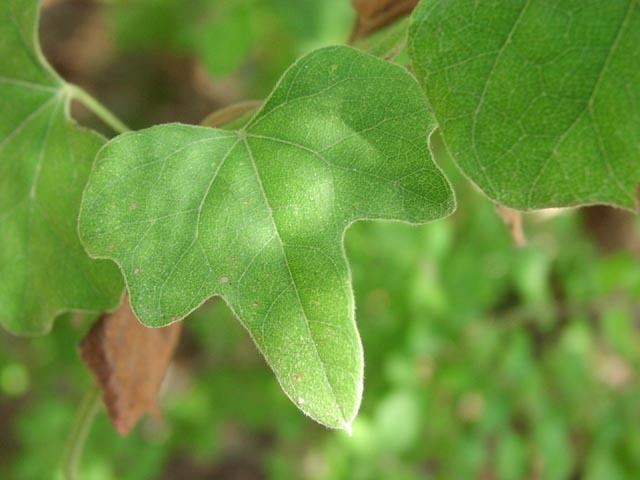 | ||
Similar Menispermum canadense, Cocculus, Berchemia scandens, Smilax bona‑nox, Ampelopsis arborea | ||
Cocculus carolinus (Carolina coralbead, redberry moonseed, Carolina snailseed, Carolina moonseed) is a perennial vine of the genus Cocculus. It is indigenous to several states in the United States along the south to midwest. It gets its name from the bright red color of the marble-like berry that protrudes from the leaves of the plant. The plant can be very invasive and difficult to control.
Contents
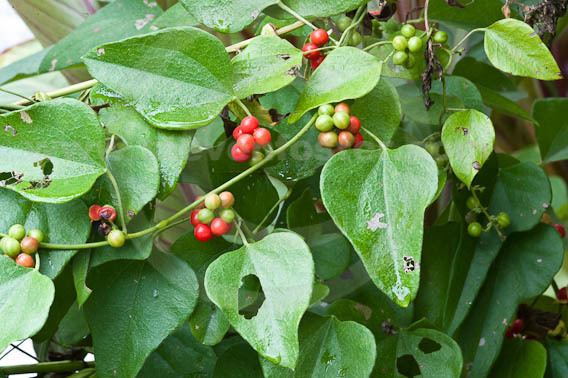
Description
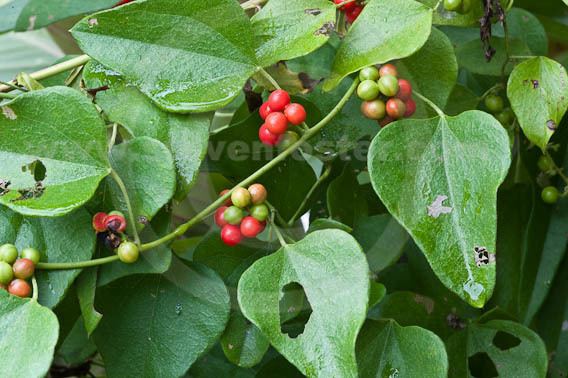
Cocculus carolinus is a climbing vine reaching 3–15 ft. with ovate or heart-shaped leaves. The male and female flowers are small and green, appearing on different plants. The bright red fruit appears from June to August, 1/4 in. in size. The coiled seed is suggestive of a snail. The plant can be very invasive and difficult to eradicate.
Distribution
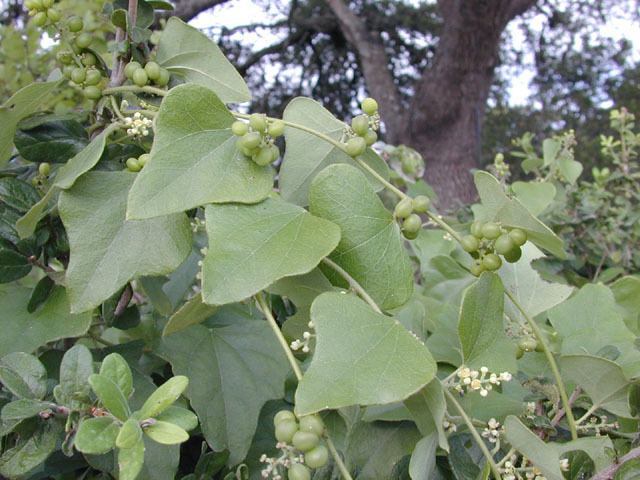
Native habitat is woods, rocky hillsides and cliffs, roadside thickets in northern Florida to Texas, North Carolina, Kentucky, southern Illinois and southeast Kansas.
Cultivation
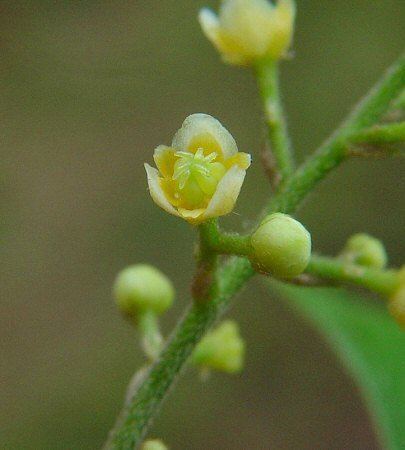
The flowers are small, and plentiful. At a young age, Carolina coralbead appear greenish. The seed need cold stratification of 3 months. Seeds germinate in 21–30 days at 68 °F. Bloom time for the plant is in late Spring and mature by late Summer. They grow in tight abundant amounts of bright red berries. By utilizing its scarlet fruits for aesthetic effects, landscapers allow it to be grown on trellises, fences or let naturally flourish through other weeds and shrubs. The berries should not be eaten by people but are eaten by a large number of birds. Each fruit has a single seed that resembles a small snail shell, protected by the hard endocarp or the inner section of the ovary wall.
Chemical components
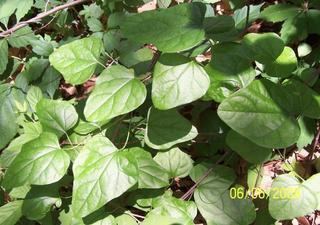
Through photochemical analysis using spectral and mixed-melting comparison, the stems and leaves of Cocculus carolinus were found to contain the following compounds: two cyclitols, (+)quercitol and (−)viburnitol; a lactone, loliolide; and three alkaloids, sinoacutine, magnoflorine, and palmatine.
